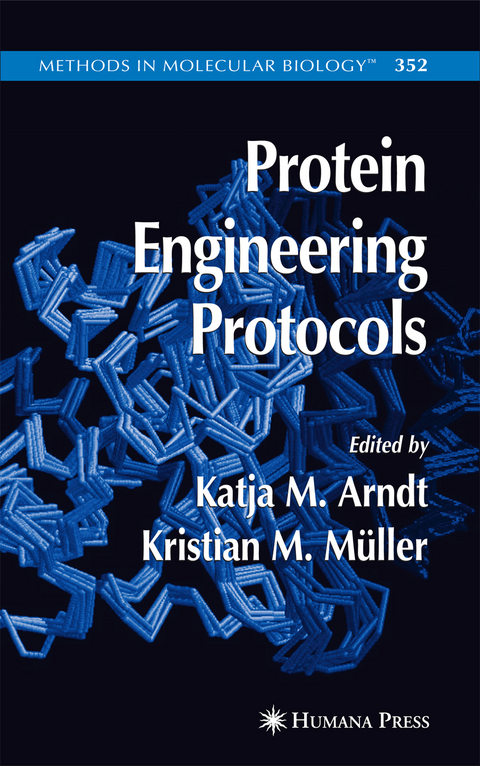
Protein Engineering Protocols
Humana Press Inc. (Verlag)
978-1-58829-072-4 (ISBN)
Design and Computational Strategies for Protein Engineering.- Combinatorial Protein Design Strategies Using Computational Methods.- Global Incorporation of Unnatural Amino Acids in Escherichia coli.- Considerations in the Design and Optimization of Coiled Coil Structures.- Calcium Indicators Based on Calmodulin-Fluorescent Protein Fusions.- Design and Synthesis of Artificial Zinc Finger Proteins.- Monobodies.- Engineering Site-Specific Endonucleases.- Evolutionary Strategies for Protein Engineering.- Protein Library Design and Screening.- Protein Design by Binary Patterning of Polar and Nonpolar Amino Acids.- Versatile DNA Fragmentation and Directed Evolution With Nucleotide Exchange and Excision Technology.- Degenerate Oligonucleotide Gene Shuffling.- M13 Bacteriophage Coat Proteins Engineered for Improved Phage Display.- Ribosome-Inactivation Display System.- Compartmentalized Self-Replication.- Synthesis of Degenerated Libraries of the Ras-Binding Domain of Raf and Rapid Selection of Fast-Folding and Stable Clones With the Dihydrofolate Reductase Protein Fragment Complementation Assay.- A General Method of Terminal Truncation, Evolution, and Re-Elongation to Generate Enzymes of Enhanced Stability.
| Erscheint lt. Verlag | 15.9.2006 |
|---|---|
| Reihe/Serie | Methods in Molecular Biology ; 352 |
| Zusatzinfo | 1 Illustrations, color; 64 Illustrations, black and white; 328 p. 65 illus., 1 illus. in color. |
| Verlagsort | Totowa, NJ |
| Sprache | englisch |
| Maße | 152 x 229 mm |
| Themenwelt | Medizin / Pharmazie |
| Naturwissenschaften ► Biologie ► Biochemie | |
| Naturwissenschaften ► Biologie ► Genetik / Molekularbiologie | |
| Naturwissenschaften ► Biologie ► Mikrobiologie / Immunologie | |
| Naturwissenschaften ► Biologie ► Zellbiologie | |
| ISBN-10 | 1-58829-072-7 / 1588290727 |
| ISBN-13 | 978-1-58829-072-4 / 9781588290724 |
| Zustand | Neuware |
| Haben Sie eine Frage zum Produkt? |
aus dem Bereich


